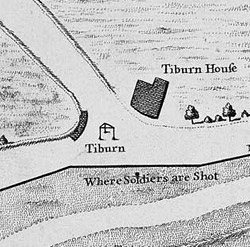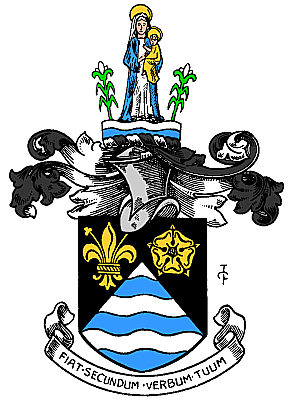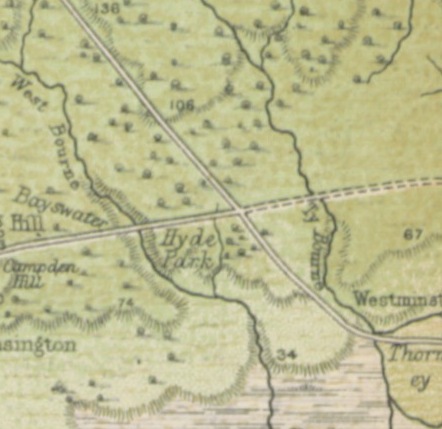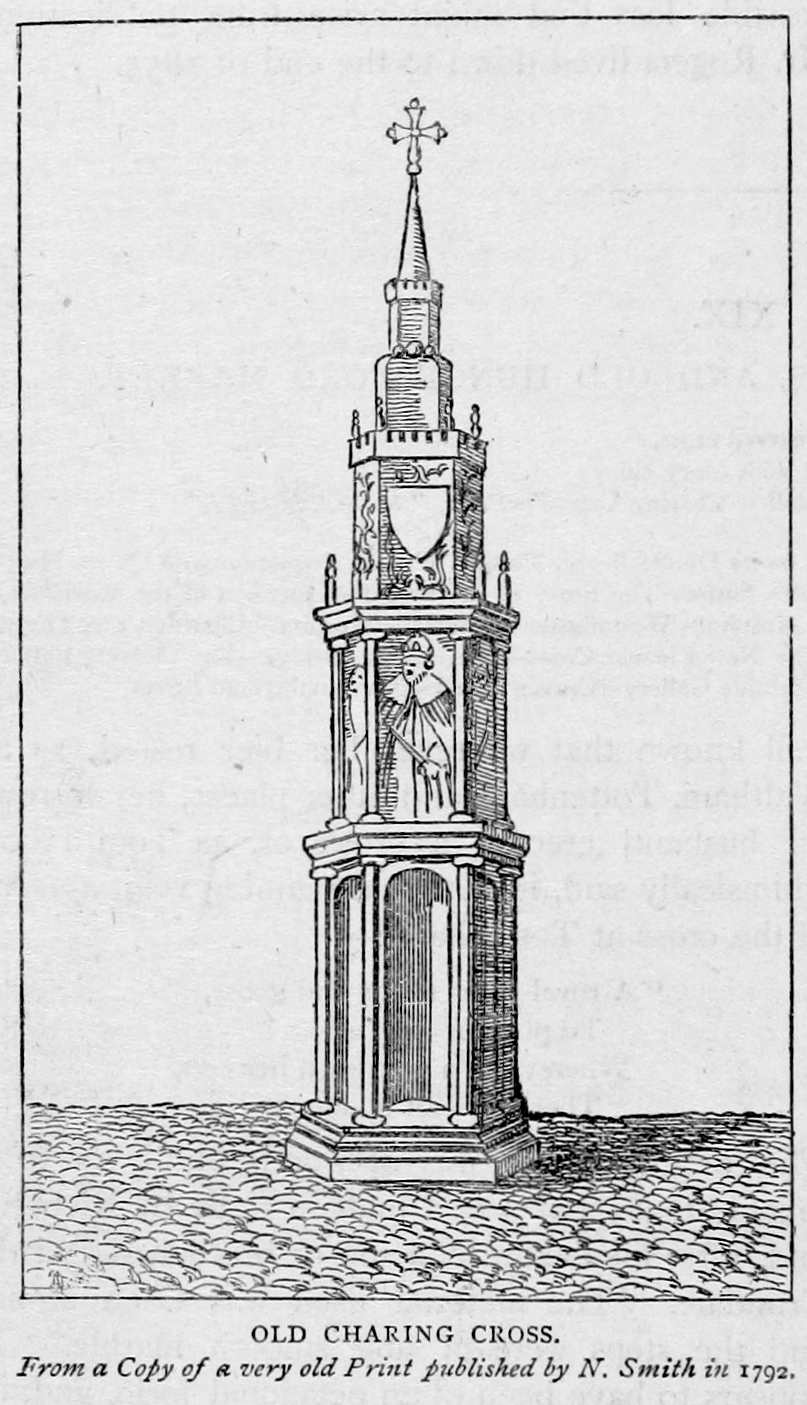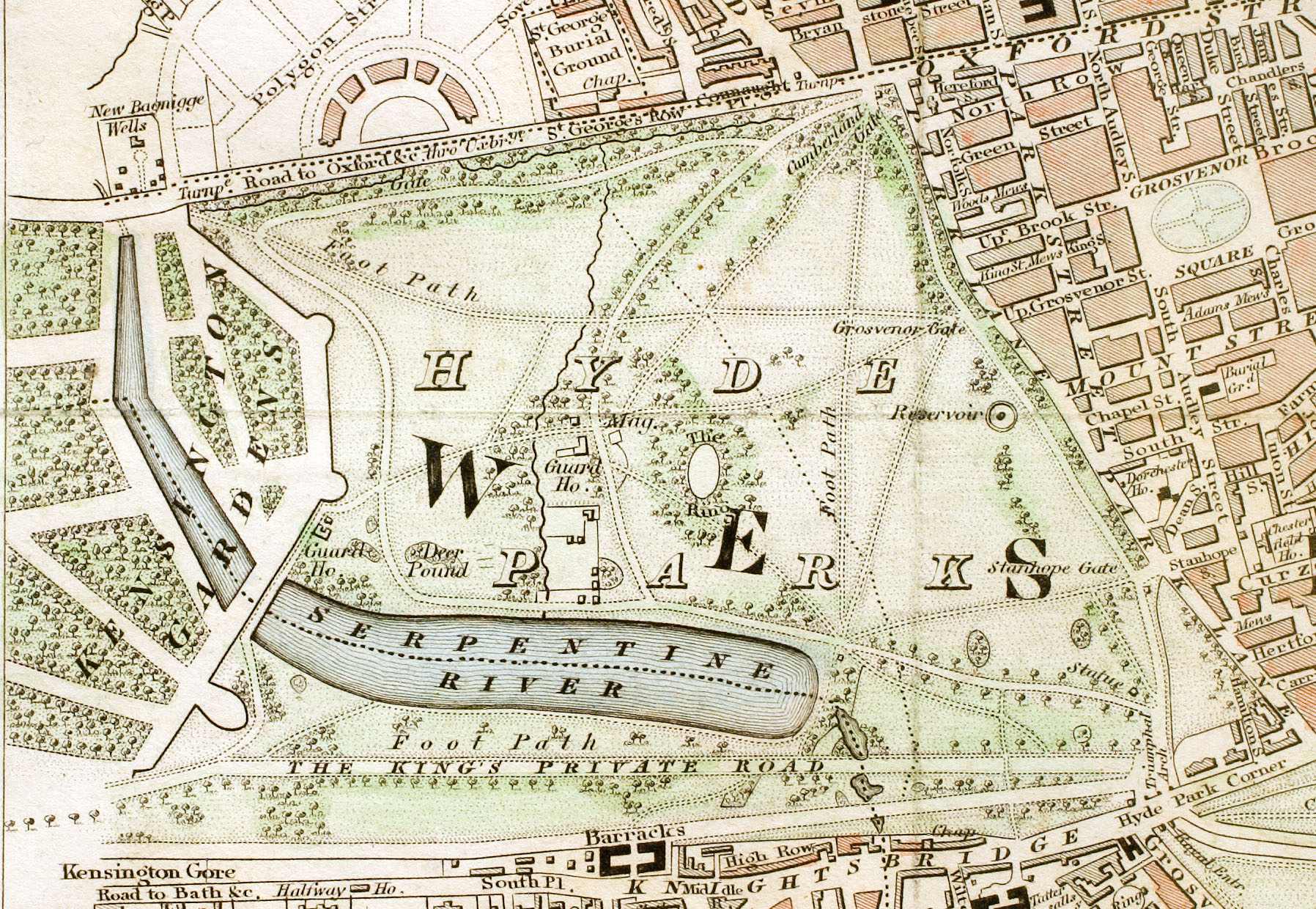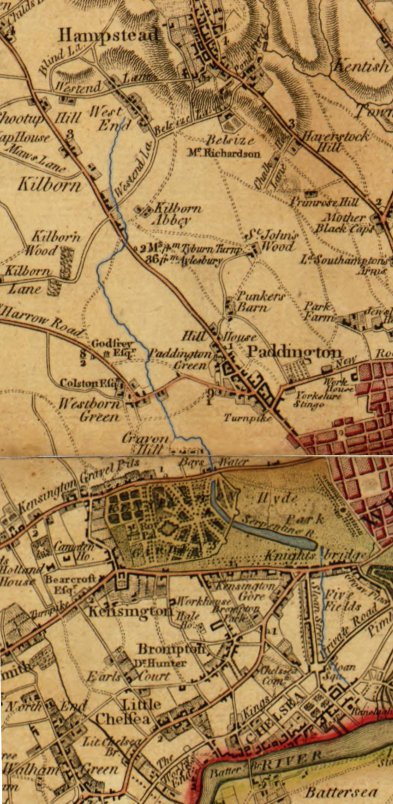|
Tyburn
Tyburn was a Manorialism, manor (estate) in London, Middlesex, England, one of two which were served by the parish of Marylebone. Tyburn took its name from the Tyburn Brook, a tributary of the River Westbourne. The name Tyburn, from Teo Bourne (stream), Bourne, means 'boundary stream'.Gover, J. E. B., Allen Mawer and F. M. Stenton ''The Place-Names of Middlesex''. Nottingham: English Place-Name Society, The, 1942: 6. The parish, and probably therefore also the manor, was bounded by Roman roads to the west (modern Edgware Road) and south (modern Oxford Street). The junction of these was the site of the famous Tyburn Gallows (known colloquially as the "Tyburn Tree"), now occupied by Marble Arch. For many centuries the name Tyburn was synonymous with capital punishment: it was the principal place for execution for London and Middlesex criminals and convicted Treason, traitors, including many religious martyrs. In the 18th century it was also known as "God's Tribunal". Hangings at ... [...More Info...] [...Related Items...] OR: [Wikipedia] [Google] [Baidu] |
River Tyburn, London
The River Tyburn was a stream (bourn) in London, England. Its main successor sewers emulate its main courses, but it resembled the Colne in its county of Middlesex in that it had many distributaries (inland mouths). It ran from South Hampstead, through Marylebone, Mayfair, St James's parish/district and Green Park to meet the tidal Thames at four sites, grouped into pairs. These pairs were near Whitehall Stairs (east of Downing Street), and by Thorney Street, between Millbank Tower and Thames House. Its much smaller cousin, the Tyburn Brook, was a tributary of the Westbourne and the next Thames tributary (west, on the north bank). Name A charter of AD 959 appears to mention the river, which it refers to as ''Merfleot'', which probably translates as ''Boundary Stream'', a suggestion reinforced by context, with the river forming the western boundary of the estate described. It is also mentioned in Edgar's Charter, dating from AD 951, where it is rendered as ''Teo-burna'', a name ... [...More Info...] [...Related Items...] OR: [Wikipedia] [Google] [Baidu] |
Marylebone
Marylebone (usually , also ) is an area in London, England, and is located in the City of Westminster. It is in Central London and part of the West End. Oxford Street forms its southern boundary. An ancient parish and latterly a metropolitan borough, it merged with the boroughs of Westminster and Paddington to form the new City of Westminster in 1965. Marylebone station lies two miles north-west of Charing Cross. The area is also served by numerous tube stations: Baker Street, Bond Street, Edgware Road (Bakerloo line), Edgware Road (Circle, District and Hammersmith & City lines), Great Portland Street, Marble Arch, Marylebone, Oxford Circus, and Regent's Park. History Marylebone was an Ancient Parish formed to serve the manors (landholdings) of Lileston (in the west, which gives its name to modern Lisson Grove) and Tyburn in the east. The parish is likely to have been in place since at least the twelfth century and will have used the boundaries of the pre- ... [...More Info...] [...Related Items...] OR: [Wikipedia] [Google] [Baidu] |
Oxford Street
Oxford Street is a major road in the City of Westminster in the West End of London, running between Marble Arch and Tottenham Court Road via Oxford Circus. It marks the notional boundary between the areas of Fitzrovia and Marylebone to the north, with Soho and Mayfair to its immediate south. It is Europe's busiest shopping street, with around 300,000 daily visitors, and had approximately 300 shops. It is designated as part of the A40, a major road between London and Fishguard, though it is not signed as such, and traffic is regularly restricted to buses and taxis. The road was originally part of the Via Trinobantina, a Roman road between Essex and Hampshire via London. It was known as Tyburn Road through the Middle Ages when it was notorious for public hangings of prisoners at Tyburn Gallows. It became known as Oxford Road and then Oxford Street in the 18th century and began to change from residential to commercial and retail use, attracting street traders, conf ... [...More Info...] [...Related Items...] OR: [Wikipedia] [Google] [Baidu] |
Tyburn Brook
Tyburn Brook was a small tributary stream to the West Bourne or Westbourne and ran mainly in Hyde Park for a few hundred metres south by south-west. It has lost its catchment to natural drainage into the gravelly topsoil and to surface water, foul and in early Victorian style combined sewers (mixing both types of water) and its small collect, its source remains beneath the earth to feed into a mixture of these. The Serpentine, having been the Westbourne's main showing is now fed by three boreholes instead. It is not to be confused with the much longer Tyburn, Ty Bourne or River Tyburn, but frequently was confused until the early 19th century as both were well west of the walls of the City of London. Literary references The brook was mentioned in William Blake's Jerusalem The Emanation of the Giant Albion: They groan’d aloud on London Stone, They groan’d aloud on ''Tyburn’s Brook'': Albion gave his deadly groan, And all the Atlantic mountains shook. See also *Subterr ... [...More Info...] [...Related Items...] OR: [Wikipedia] [Google] [Baidu] |
Marble Arch
The Marble Arch is a 19th-century white marble-faced triumphal arch in London, England. The structure was designed by John Nash in 1827 as the state entrance to the cour d'honneur of Buckingham Palace; it stood near the site of what is today the three-bayed, central projection of the palace containing the well-known balcony. In 1851, on the initiative of architect and urban planner Decimus Burton, a one-time pupil of John Nash, the arch was relocated to its current site, near the northeast corner of Hyde Park, so that expansion of Buckingham Palace could proceed. The arch gives its name to the area surrounding it, particularly the southern portion of Edgware Road and also to the underground station. The arch is not part of the Royal Parks and is maintained by Westminster City Council. Design and construction Nash's three-arch design is based on that of the Arch of Constantine in Rome and the Arc de Triomphe du Carrousel in Paris. The triumphal arch is faced with Carrara ... [...More Info...] [...Related Items...] OR: [Wikipedia] [Google] [Baidu] |
Newgate Gaol
Newgate Prison was a prison at the corner of Newgate Street and Old Bailey, just inside the City of London, England, originally at the site of Newgate, a gate in the Roman London Wall. Built in the 12th century and demolished in 1904, the prison was extended and rebuilt many times, and remained in use for over 700 years, from 1188 to 1902. In the late 18th century, executions by hanging were moved here from the Tyburn gallows. These took place on the public street in front of the prison, drawing crowds until 1868, when they were moved into the prison. For much of its history, a succession of criminal courtrooms were attached to the prison, commonly referred to as the "Old Bailey". The present Old Bailey (officially, Central Criminal Court) now occupies much of the site of the prison. History In the 12th century, Henry II instituted legal reforms that gave the Crown more control over the administration of justice. As part of his Assize of Clarendon of 1166, he required the ... [...More Info...] [...Related Items...] OR: [Wikipedia] [Google] [Baidu] |
Charing Cross
Charing Cross ( ) is a junction in Westminster, London, England, where six routes meet. Since the early 19th century, Charing Cross has been the notional "centre of London" and became the point from which distances from London are measured. Clockwise from north, the routes that meet at Charing Cross are: the east side of Trafalgar Square leading to St Martin's Place and then Charing Cross Road; the Strand leading to the City; Northumberland Avenue leading to the Thames Embankment; Whitehall leading to Parliament Square; The Mall leading to Admiralty Arch and Buckingham Palace; and two short roads leading to Pall Mall and St James's. Historically, the name was derived from the hamlet of ''Charing'' ('Riverbend') that occupied the area of this important road junction in the middle ages, together with the grand Eleanor cross that once marked the site. The medieval monumental cross, the Charing Cross (1294–1647), was the largest and most ornate instance of a chain of me ... [...More Info...] [...Related Items...] OR: [Wikipedia] [Google] [Baidu] |
Hyde Park, London
Hyde Park is a , historic Listed building#Heritage protection, Grade I-listed urban park in Westminster, Greater London. A Royal Parks of London, Royal Park, it is the largest of the parks and green spaces that form a chain from Kensington Palace through Kensington Gardens and Hyde Park, via Hyde Park Corner and Green Park, past Buckingham Palace to St James's Park. Hyde Park is divided by the Serpentine and the Long Water lakes. The park was established by Henry VIII in 1536 when he took the land from Westminster Abbey and used it as a hunting ground. It opened to the public in 1637 and quickly became popular, particularly for May Day parades. Major improvements occurred in the early 18th century under the direction of Caroline of Ansbach, Queen Caroline. The park also became a place for duels during this time, often involving members of the nobility. In the 19th century, the Great Exhibition of 1851 was held in the park, for which The Crystal Palace, designed by Joseph Paxt ... [...More Info...] [...Related Items...] OR: [Wikipedia] [Google] [Baidu] |
River Thames
The River Thames ( ), known alternatively in parts as the The Isis, River Isis, is a river that flows through southern England including London. At , it is the longest river entirely in England and the Longest rivers of the United Kingdom, second-longest in the United Kingdom, after the River Severn. The river rises at Thames Head in Gloucestershire and flows into the North Sea near Tilbury, Essex and Gravesend, Kent, via the Thames Estuary. From the west, it flows through Oxford (where it is sometimes called the Isis), Reading, Berkshire, Reading, Henley-on-Thames and Windsor, Berkshire, Windsor. The Thames also drains the whole of Greater London. The lower Reach (geography), reaches of the river are called the Tideway, derived from its long Tidal river, tidal reach up to Teddington Lock. Its tidal section includes most of its London stretch and has a rise and fall of . From Oxford to the estuary, the Thames drops by . Running through some of the drier parts of mainland Bri ... [...More Info...] [...Related Items...] OR: [Wikipedia] [Google] [Baidu] |
Edgware Road
Edgware Road is a major road in London, England. The route originated as part of Roman Watling Street and, unusually in London, it runs for in an almost perfectly straight line. Forming part of the modern A5 road, Edgware Road undergoes several name changes along its length, including Maida Vale, Kilburn High Road, Shoot Up Hill and Cricklewood Broadway; but the road is, as a whole, known as Edgware Road, as it is the road leading to Edgware. The road runs from central to suburban London, beginning at Marble Arch in the City of Westminster and heading north to Edgware in the London Borough of Barnet. It is used as the boundary for four London boroughs: Harrow and Brent to the west, and Barnet and Camden to the east. Route The road runs north-west from Marble Arch to Edgware on the outskirts of London. It crosses the Harrow Road and Marylebone Road, passing beneath the Marylebone flyover. The road passes through the areas of Maida Vale, Kilburn and Cricklewood. It then ... [...More Info...] [...Related Items...] OR: [Wikipedia] [Google] [Baidu] |
River Westbourne
The Westbourne or Kilburn, also known as the Ranelagh Sewer, is a culverted small Tributaries of the River Thames#Tributaries, River Thames tributary in London, rising in Hampstead and Brondesbury Park and which as a drain unites and flows southward through Kilburn, London, Kilburn and Bayswater (west end of Paddington) to skirt underneath the east of Serpentine (lake), Hyde Park's Serpentine lake then through central Chelsea under Sloane Square. It passes centrally under the south side of Ranelagh Gardens, Royal Hospital Chelsea's Ranelagh Gardens before discharging into Inner London's combined sewer system, with exceptional discharges (to be abated by a 2021-completion scheme) into the Tideway#Inner London, Inner London Tideway. Since the latter 19th century, the population of its catchment has risen further but to reduce the toll it places on the Beckton Sewage Treatment Works and related bills its narrow Drainage basin, basin has been assisted by private soakaways, and pub ... [...More Info...] [...Related Items...] OR: [Wikipedia] [Google] [Baidu] |
